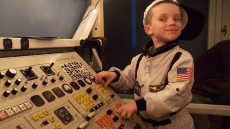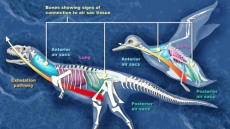Are you amazed at the success of Serena Williams who has just won her third consecutive US Open title? Along with physical strength and endurance, her success may also be due to the functioning of the brain areas which help take aim, a study suggests.
Different regions of the brain help to visually locate objects relative to one's own body (self-centred or egocentric) and those relative to external visual landmarks (world-centred or allocentric), the findings showed.
"The current study shows how the brain encodes allocentric and egocentric space in different ways during activities that involve manual aiming," said Doug Crawford from the York University in Canada.
"Take tennis, for example. Allocentric brain areas could help aim the ball toward the opponent's weak side of play, whereas the egocentric areas would make sure your muscles return the serve in the right direction," Crawford explained.
The study finding will help healthcare providers to develop therapeutic treatment for patients with brain damage in these two areas, the researchers said.
"As a neurologist, I am excited by the finding because it provides clues for doctors and therapists as to how they might design different therapeutic approaches," said lead researcher Ying Chen from the York University.
The study involved a dozen participants who were tested with a fMRI (functional magnetic resonance imaging) scanner.
The participants were given three different tasks to complete when viewing remembered visual targets: egocentric (remembering absolute target location), allocentric (remembering target location relative to a visual landmark) and a nonspatial control, colour report (reporting colour of target).
When participants remembered egocentric locations, areas in the upper occipital lobe (at the back of the brain) encoded visual direction.
In contrast, lower areas of the occipital and temporal lobes encoded object direction relative to other visual landmarks.
In both cases, the parietal and frontal cortex (near the top of the brain) coded reach direction during the movement.
The study appeared in the Journal of Neuroscience.





